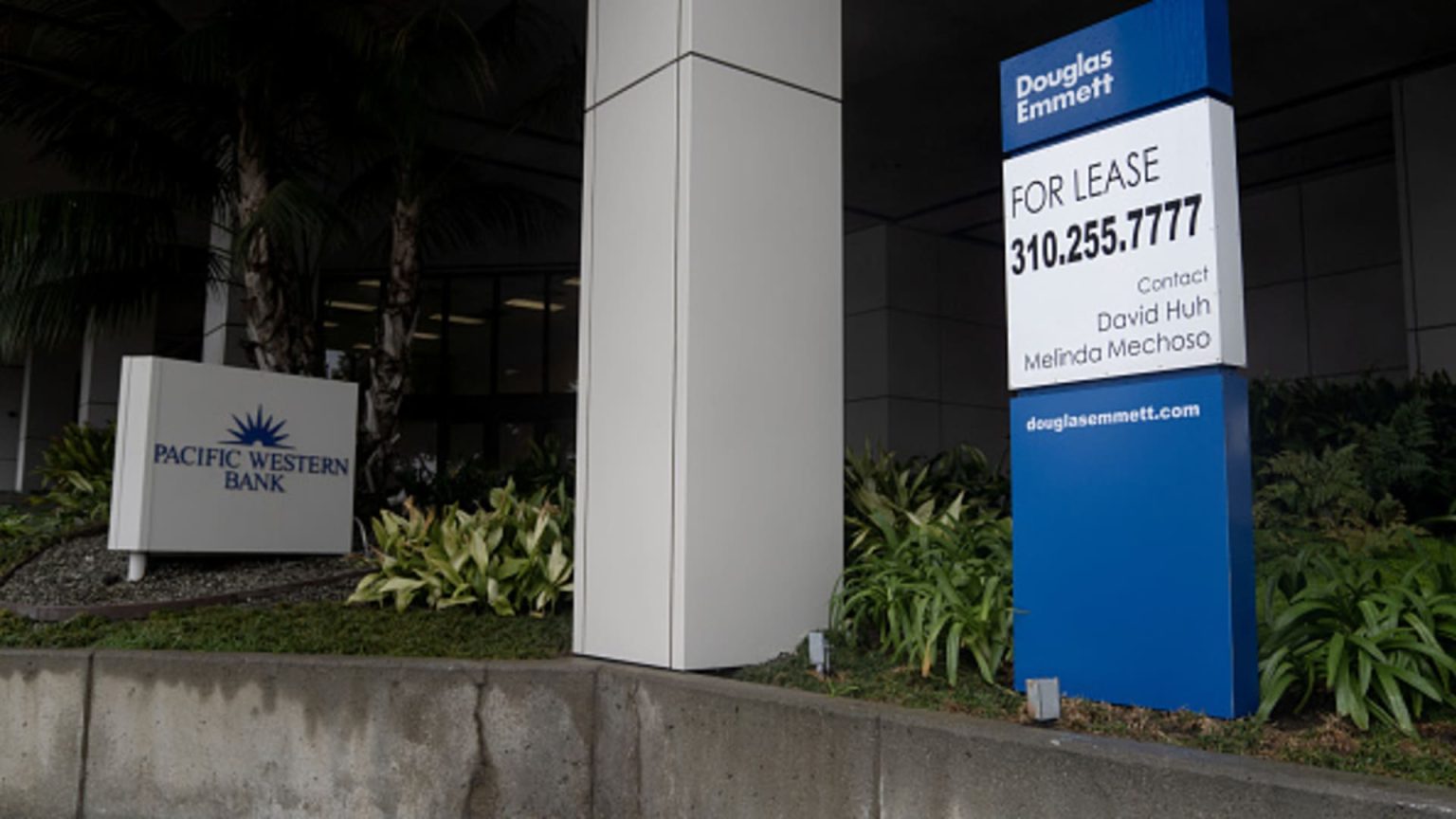A “For Lease” sign at a Pacific Western Bank branch in Los Angeles, California, US, on Friday, March 10, 2023.
Eric Thayer | Bloomberg | Getty Images
This report is from today’s CNBC Daily Open, our new, international markets newsletter. CNBC Daily Open brings investors up to speed on everything they need to know, no matter where they are. Like what you see? You can subscribe here.
U.S. regional banks continued falling Thursday even though their deposits have been increasing.
What you need to know today
- U.S. regional banks continued falling Thursday. PacWest Bancorp lost half its value on the day, continuing a slide that began Wednesday on the news that the Los Angeles-based bank may put itself up for sale. First Horizon sank 33.2% after its merger deal with TD Bank was terminated, and Western Alliance plummeted 38.5%.
- Apple reported a 3% year-over-year drop in both revenue and net income to $94.84 billion and $24.16 billion, respectively, for the quarter ended April 1. Both numbers, however, beat Wall Street expectations, buoyed by growth in iPhone sales. CEO Tim Cook is optimistic about Apple’s prospects in Asia, and the company’s shares rose 2.3% in extended trading.
- Markets in the U.S. traded lower Thursday, with all major indexes ending the day in the red — though futures ticked up following the release of Apple’s earnings after the bell. Europe’s Stoxx 600 index lost 0.5% after the European Central Bank raised interest rates (more on that below).
The bottom line
Fears of fragility in the U.S. banking sector are spreading.
Regional bank stocks continued tumbling Thursday; shares of PacWest and Western Alliance were halted more than once. The SPDR S&P Regional Bank ETF (KRE) fell 5.5%. At one point on Thursday, every stock in the KRE traded lower as investors sold off regional banks.
It’s not just investors who are worried about banks’ health. Consumers — many of whom do not trade stocks — share the same sentiment. A Gallup survey found that half of respondents polled were “very worried” or “moderately worried” about the safety of their bank deposits — a proportion last seen during the 2008 financial crisis.
Against such a backdrop — and fresh off a quarter percentage point rate hike by the Federal Reserve on Wednesday — markets, unsurprisingly, didn’t do well. The Dow slid 0.86%, the S&P 500 lost 0.72% and the Nasdaq fell 0.49%. That’s the fourth consecutive day all major indexes fell.
But some analysts and bankers think the tumult is caused by fear more than analysis. (Though this is not to argue against the idea markets are, largely, driven by psychology.)
Evercore ISI’s John Pancari, for instance, wrote the advisory firm is confident about the “liquidity and capital levels at banks post 1Q.” Indeed, PacWest said its deposits grew $1.8 billion from March 20 to April 24; Western Alliance also reported that its deposits have increased since the end of March.
But Pancari warned bank valuations could still collapse because of a “self-fulfilling prophecy,” where investors, fearing the collapse of banks, actually trigger the process as they flee.
Or, as Peter McGratty, head of U.S. bank research at KBW, put it, “We’re in this situation that feels a lot like March, where we’re trading stocks on fear … not fundamentals.” And that’s particularly scary today, when SVB’s failure in March showed how fears can spread near instantly on social media and cause a bank to collapse in merely 36 hours.
Subscribe here to get this report sent directly to your inbox each morning before markets open.
Read the full article here




